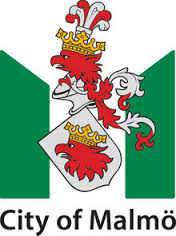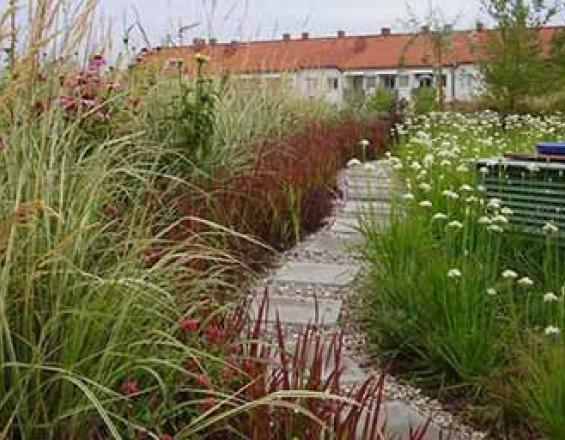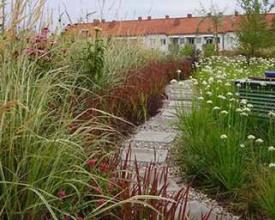
Gestion des eaux pluviales et régénération urbaine à Malmö

Augustenborg a connu un déclin socio-économique et des inondations dues au débordement du système d'évacuation des eaux. Cette solution collaborative visait à équiper la zone de systèmes de drainage urbain durable dans le cadre d'un projet de régénération plus large, créant ainsi un quartier plus durable et favorisant la biodiversité. L'objectif principal était de traiter 70 % des eaux pluviales provenant des toits et des zones imperméabilisées, éliminant ainsi les débordements des égouts unitaires en diminuant le volume total des eaux pluviales et en réduisant les débits de pointe.
Contexte
Défis à relever
Le manque de sensibilisation et les doutes quant à la valeur des systèmes d'assainissement autonome ont suscité la résistance des urbanistes et des ingénieurs hydrauliciens. L'apathie et les barrières linguistiques du public ont empêché une participation et un soutien généralisés. Le défi consistait donc à mettre au point un système fonctionnel qui n'endommage pas les infrastructures existantes et qui soit acceptable pour les habitants. Lors de la mise en œuvre, des problèmes techniques tels que la prolifération d'algues et la recherche d'espaces pour mettre en place les systèmes d'évacuation des eaux usées ont posé des difficultés. Des questions de santé et de sécurité ont également dû être résolues, car de nombreux systèmes d'évacuation des eaux usées étaient situés à proximité d'écoles et/ou de personnes âgées.
Emplacement
Traiter
Résumé du processus
Blocs de construction
Partenariat pour le succès : garantir l'expertise et le financement
Facteurs favorables
Leçon apprise
Maximiser les co-bénéfices grâce à une planification intelligente
Facteurs favorables
Leçon apprise
Engager les parties prenantes à sensibiliser et à soutenir
Facteurs favorables
Leçon apprise
Impacts
Le projet a permis de créer un système de protection contre les inondations résistant et de revitaliser le quartier environnant. Au total, 6 km de canaux et de voies d'eau et dix bassins de rétention ont été créés pour collecter les eaux de pluie dans des fossés et des réservoirs naturels avant de les acheminer vers un système d'égout conventionnel. Les eaux de pluie provenant des toits, des routes et des parkings sont acheminées par des tranchées, des fossés, des étangs et des zones humides visibles, de sorte qu'environ 90 % des eaux pluviales sont dirigées vers le réseau d'eaux pluviales à ciel ouvert. En outre, le volume annuel total des eaux de ruissellement est réduit d'environ 20 % par rapport au système conventionnel. Ces éléments paysagers sont intégrés dans le paysage urbain au sein de 30 cours intérieures, qui constituent également des espaces verts récréatifs pour les habitants de la région. Grâce à cette initiative, il n'y a pas eu d'inondations dans la zone depuis l'installation du système ouvert de gestion des eaux pluviales. Le projet visait également la conservation de la biodiversité et a apporté des contributions significatives à cet égard.
Bénéficiaires
Les habitants bénéficient d'une réduction des risques d'inondation et d'une augmentation des valeurs récréatives. Les invertébrés, les plantes aquatiques et les oiseaux profitent des habitats humides nouvellement créés. L'expérience d'Augustenborg peut servir de modèle à d'autres qui tentent de mettre en place des systèmes d'assainissement non collectif.
